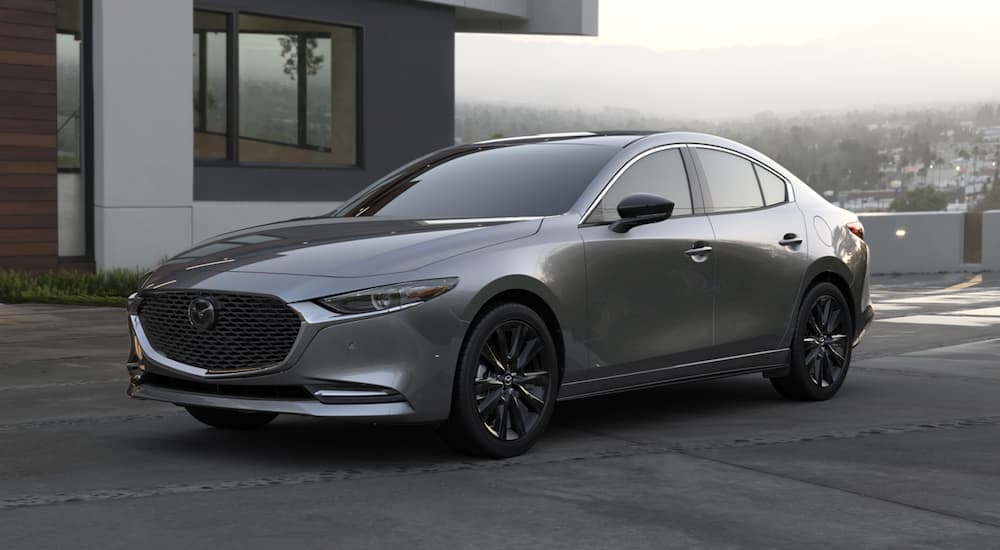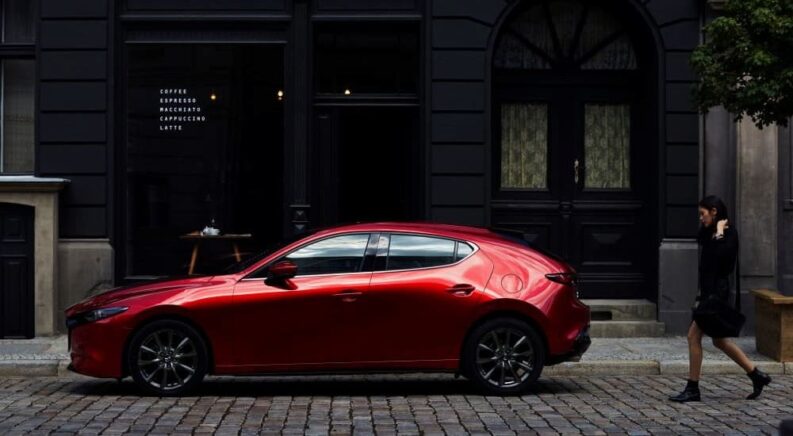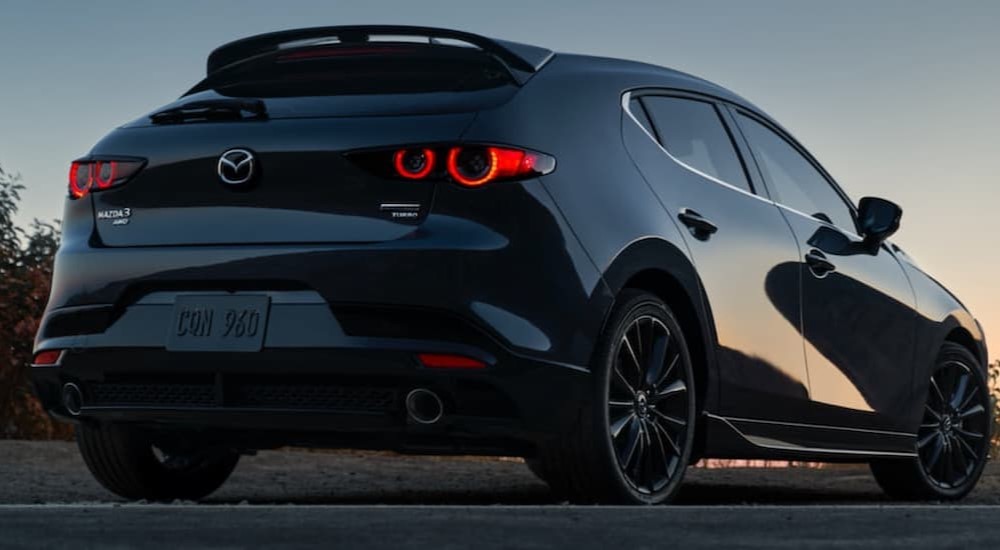For many drivers, horsepower is the gold standard when it comes to comparing different vehicles. While this can be a useful metric in some cases, it isn’t actually the most relevant figure when it comes to how most people use their vehicles. Horsepower might be a good predictor of a vehicle’s top speed, but since few drivers will ever push their vehicles much past the 100 km/h mark in daily life, it tends to be a little academic. Torque, on the other hand, is much more applicable for the everyday driver, and you’ll probably notice the difference if you find yourself shopping for a Mazda3 for sale.
What Is Torque?
Horsepower and torque are actually closely-related measurements. In fact, horsepower is simply torque multiplied by the engine speed. But what is torque? This measurement describes how much twisting force an engine can produce, and has far more of an effect on those seated behind the wheel, making it the metric of choice for those looking to maximize a vehicle’s acceleration. That’s not to say horsepower isn’t important––a solid mix of horsepower and torque is the hallmark of any high-performance vehicle––but if you can only have one, torque is the way to go. Think of it this way: every time you get on the highway, you’ll need to accelerate to 100 km/h, but unless you take your car to the track, you’ll probably never come close to testing your vehicle’s top speed.
The debate between horsepower and torque has raged between gearheads for decades, but there’s no denying the impact that the latter can have on performance. Low-end torque––which usually describes the torque produced below 3,000-4,000 RPMs, is particularly important since being able to maximize this type of power is essential for applications like racing or towing a heavy load. Low-end torque gives drivers access to more of the engine’s power while in lower gears, resulting in less need to rev the engine out and an overall more relaxed driving experience.

Mazda Delivers More Useable Power
Drivers shopping around for a Mazda3 for sale will likely have noticed that this compact sedan delivers some impressive torque figures across its engine lineup. For instance, the Honda Civic’s base 2.0L engine provides 158 hp and 138 lb-ft of torque. Having more horsepower than torque is fairly typical for small, naturally-aspirated engines. However, Mazda tuned its 2.0L engine to provide more usable power to everyday drivers, giving you a slightly lower 155 hp but a significantly better 150 lb-ft of torque. That extra muscle will be felt any time you accelerate from a stop, and the trend continues across the Mazda3 engine lineup.
The available 2.5L naturally-aspirated engine for the Mazda3 is rated for 191 hp and 186 lb-ft of torque. This is actually the largest engine you will find in a compact sedan, as most competitors have switched to smaller turbocharged engines. But even turbocharged options like the 1.5L in the Honda Civic provide less torque than the Mazda 2.5L. In fact, the Civic only supplies 180 hp and 177 lb-ft of torque unless you opt for the high-performance Civic Si.
Those seeking something that’s even faster off the starting line have another option, with Mazda offering a turbocharged version of the 2.5L four-cylinder engine that ups performance to 250 hp and 320 lb-ft of torque. That is a simply incredible torque figure for this segment, and you won’t find anything else to compare it to. The closest competitor is the performance-oriented Subaru WRX, but that car’s 2.4L turbocharged four-cylinder tops out at 271 hp and only 258 lb-ft of torque. With so much torque delivered at just 2,500 RPM, the Mazda3 Turbo always has power on tap with no hesitation.
Tuning for More Torque
The Mazda3 certainly isn’t hurting for torque, especially when you spring for the available turbocharged engine, but tuning is always an option for those seeking a little extra oomph. There are a few simple tips and tricks that can help you unlock a vehicle’s true torque potential, and while some require a good amount of automotive know-how, others can easily be completed by any driver who knows one end of a socket wrench from the other. Let’s take a look at some of the simplest tuning methods for improving low-end torque and see how they can be applied to a vehicle like the Mazda3.
Up the Octane
Never underestimate the value of springing for the premium blend. Contrary to popular belief, premium fuel doesn’t contain any more energy than regular fuel. However, a higher octane rating prevents early combustion of the fuel-air mixture, allowing the engine to dial up the compression and make more power. In most compact cars, simply adding premium fuel alone won’t do anything, but Mazda added sensors in its 2.5L turbocharged engine that detect the presence of high-octane fuel and deliver more power. Without premium fuel, it dials things back to protect the engine, delivering a slightly tamer 227 hp and 310 lb-ft of torque. Despite the seemingly ever-rising cost of gas, filling your turbocharged vehicle up with premium fuel is a cheap and easy way to improve overall performance without ever breaking out the toolbox.
Perform ECU Tuning
The term “tuning” has long been used to describe upgrades that push a vehicle past its stock performance, but it’s taken on new meaning in recent decades with the introduction of digital tuning devices or “chip tuners.” These handheld tuners communicate with a vehicle’s engine control unit (ECU), allowing a driver to reprogram the ECU and adjust fuel injection, sensors, airflow, and more. When a vehicle rolls off the production line, the ECU is usually configured to maximize fuel economy in order to ensure the automaker hits its all-important fuel economy and emissions targets. By remapping the ECU with the help of a chip tuner, drivers can change the way that power is delivered to the engine, increasing torque and horsepower at the cost of overall efficiency.
A simple off-the-shelf tune can easily result in an additional 40 to 50 lb-ft of torque for the Mazda3 turbo––along with a similar amount of additional horsepower––making it a worthwhile endeavour for those who value performance above all else. A tune can also be combined with higher octane fuels like E85 or race gas to produce even more power. This is an easy process that requires little technical know-how as the device is simply plugged into a vehicle’s ECU port, although it can be relatively expensive, with a good chip tuner and tune going for close to $1,000 CAD.
Don’t Discount Torque
Not getting as much power out of your vehicle as you’d like? Suffering from sluggish acceleration or just looking to see what your vehicle can do? With a few simple tips and tricks, it’s easy to squeeze a little more low-end torque out of your ride. When automakers roll out a new model, their goal is usually to produce a vehicle that will appeal to the largest number of drivers possible. It’s a shrewd business decision but one that can result in an underwhelming driving experience. Once you get under the hood and learn a little more about what makes for a fun ride, it’s easy to turn a stock vehicle into something that’ll really get your blood flowing. Particularly if you start with an already capable platform like the Mazda3.





